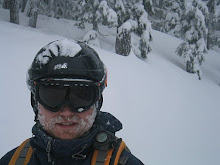1. Saisons
- In the words of K. Florian Klemp, "The French word for season, saison, has become a stylistic designation to distinguish a group of beers from Wallonia, the French-speaking region of Belgium. Today, these historically seasonal ales are brewed year-round. Saisons present a complex character that is both aggressive and subtle. Unmistakably Belgian and unequivocally rustic, they beckon exploration. "
- BCJP style description
- Ever since I first tried beer on my 21st birthday, porters have always been my favorite style. But over the last year or so, saisons have been giving it a run for the money.
- My idea was to do two different saisons: the first would be more traditional and get its spicy characteristics directly from a specific saison-style yeast; the second would use a more neutral belgian yeast and get flavor from the additions of spices and wildflowers
- Notable commercial examples: Boulevard Saison w/ Brett, Dupont Avec les Bons Voeux, Fantôme Saison, Moinette Biologique, Saison Dupont Vieille Provision, Southampton Cuvee des Fleurs and The Bruery Saison de Lente
2. Fermentation Temps
- While the general rule of thumb ale yeasts seems to be fermentation around 70 degrees on the high end, saison yeasts are recommended at 80 degrees or even higher
- That makes them perfect for summer and the higher temps should bring out the spice and fruity esters that saisons are known for
- I'm 4 days into Rêve de Wallonia and 3 days into Saison de Deux Médecine and have been keeping them in the kitchen for the most part to maximize the heat
- Ambient temps have been mostly in the 80's, reaching as high as 92 (!!)
- Fermentation has been strong and I will be taking samples in the next 3-4 days
3. Spices / Wildflowers
- Previously I've used a few spices (corriander, grains of paradise) in an Imperial Wit, but here I used several new to me.
- In the tradition of using local ingredients, I wanted to use wildflowers picked while on a backpacking trip. I picked a bunch, but many turned out to be inedible. Yarrow however worked. The dried yarrow I got was from Eastern Washington and the wildflower honey from Western Washington.
- I like the general idea of using wild ingredients and plan on doing a spruce tip IPA soon
4. Brettanomyces
- Another layer to this experiment was to use Brettanomyces wild yeast for the first time
- Vinnie Cilurzo of Russian River Brewing: Brettanomyces (also known as Brett) is feared by most brewers and winemakers alike. In fact, there are some local winemakers who will not set foot in our brewpub in Downtown Santa Rosa due to our use of Brettanomyces. Brettanomyces is actually yeast, it ferments and acts the same as every other "conventional" yeast, it just has the propensity to continue fermenting through almost any type of sugar, including those natural sugars found in the wood in an oak barrel. Brett is very invasive and if not handled properly can become out of control in a winery or brewery, but, if used properly with care, it can add rich aromas and flavors of earthiness, leather, smoke, barnyard, & our favorite descriptor-wet dog in a phone booth.
- While used for many years in classic beers such as Orval, brett has become quite popular in recent years and has been showing up in saisons as a secondary yeast
- My choice: Wyeast 5151-PC Brettanomyces claussenii - Isolated from English stock ale, this wild yeast produces a mild Brett character with overtones of tropical fruit and pineapple. It ferments best in worts with a reduced pH after primary fermentation has begun. May form a pellicle in bottles or casks. Typically used in conjunction with other yeast and lactic acid bacteria.
- Brett will certainly change the flavor of my beers and should also help them attenuate and dry out - something you want in a saison
- Using brett will requiring purchasing some new equipment, hoses, etc. b/c you can't rid the critters from anything that is porous; glass carboys will be fine
5. Batch Splitting
- I'm doing several new things with these two beers with the big one definitely being the brettanomyces
- In order to fully understand its impacts on each recipe, I will be only using it in part of each beer
- I will take each beer, split in half and only put brett in half; thus ending up with essentially four different beers
- The results should go along way in understanding not only brett, but also the high fermenation temps, use of spices, etc.
- This is something I plan on continuing in the future in regards to using oak again, adding fruit, etc.





















